Planning a toast and wondering just how many glasses you'll get out of that bottle of champagne? It's the classic host's dilemma. The good news is, there's a simple rule of thumb that experienced hosts and bartenders live by.
Your Quick Answer to Champagne Pours
A standard 750ml bottle of Champagne will reliably serve six full glasses. That’s the magic number. Knowing this little secret means you can plan any event, from a small get-together to a big bash, without the stress of running out of bubbles right before the big moment.
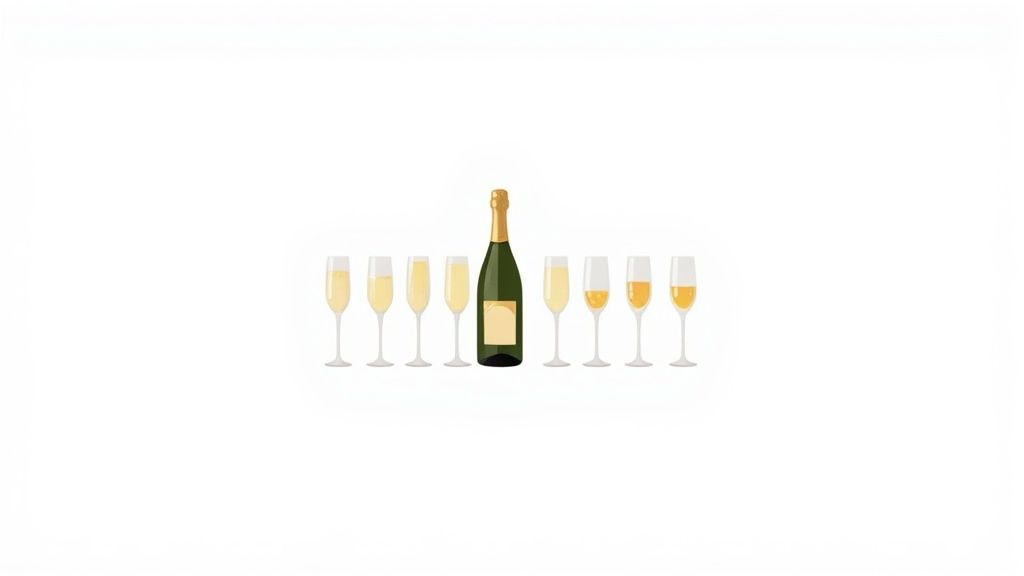
This six-glass benchmark is based on a 125ml pour, which is the standard serving size you’ll find in most Australian restaurants and bars. It’s the perfect amount to let you appreciate the Champagne’s delicate aromas and lively fizz before it gets warm in the glass. It’s a measure that works beautifully, preventing both waste and disappointment.
And we Australians certainly love our Champagne. With millions of bottles imported each year, understanding the basics of serving is key for any local host. To give you some perspective, the 2020 imports alone could have filled over 51 million standard glasses—a testament to our passion for celebrating with a good drop of bubbly. You can dive deeper into the Champagne economy in Australia on The Drinks Business.
The Rule of Six: A standard 750ml bottle is your best friend for small gatherings, perfectly serving six people with a classic 125ml flute pour.
Of course, not all pours are created equal. The number of glasses you get can change depending on how generous you're feeling.
Here’s a quick breakdown of what you can expect from a single 750ml bottle based on different serving sizes. Think of this as your cheat sheet for perfect party planning.
Champagne Servings from a Standard 750ml Bottle
| Pour Type | Pour Size (ml) | Glasses Per Bottle |
|---|---|---|
| Tasting Pour | 75ml | 10 Glasses |
| Toast Pour | 90ml | 8 Glasses |
| Standard Flute | 125ml | 6 Glasses |
| Generous Pour | 150ml | 5 Glasses |
This table gives you a great starting point. The Standard Flute pour is your go-to for most occasions, but a smaller Toast Pour can be a smart way to make your bottles stretch further for larger crowds.
A Guide to Champagne Bottle Sizes
Sure, the standard 750ml bottle is what we all reach for, but the world of Champagne is far bigger and more fascinating than that. It’s a world filled with bottles of all shapes and sizes, each with a unique, often biblical, name and a specific purpose. Stepping beyond the standard bottle opens up a whole new way of hosting, letting you pick a format that perfectly suits the vibe of your celebration.
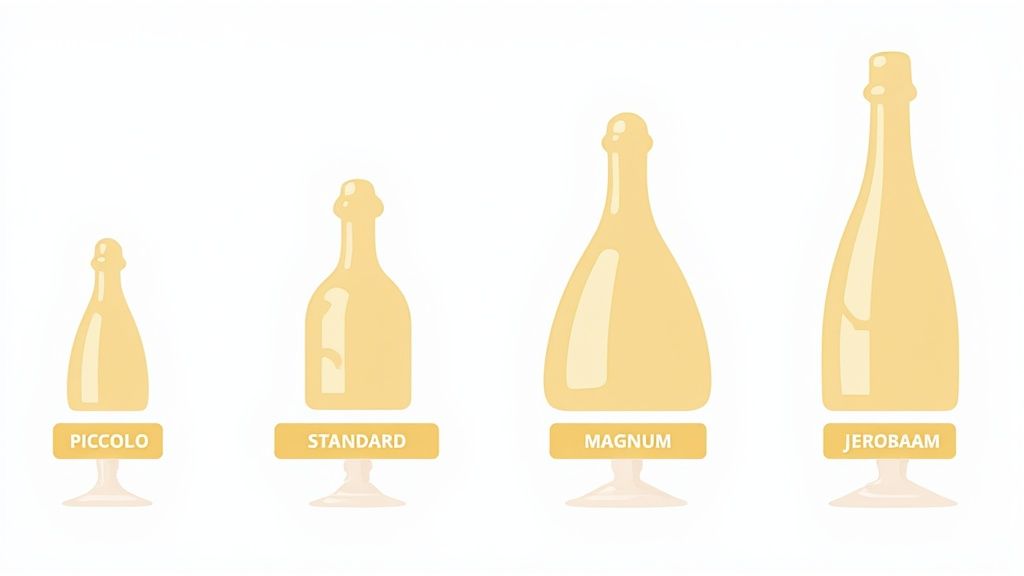
From the single-serve Piccolo to the party-starting Magnum, every size tells a different story. The Magnum, holding a generous 1.5 litres (that’s two standard bottles), is especially loved by those in the know. And it's not just about having more to pour; the larger volume of wine compared to the air inside the bottle actually slows down the ageing process.
This gentle maturation allows the Champagne to develop deeper, more complex flavours over time, resulting in a finer, more persistent fizz. You can think of it like slow-cooking a delicious meal versus rushing it the end result is just so much more refined.
From Magnum to Methuselah
Getting a handle on these different formats makes it easy to figure out how many glasses you’ll get from a bottle, no matter the size. While you might know about the standard six glasses in a wine bottle for still wines, the numbers for Champagne climb quickly with these larger formats.
A Magnum isn't just for show. Experts agree its superior ageing potential makes it the ideal format for cellaring high-quality Champagne, delivering a more sophisticated tasting experience.
To help you get your head around the options for your next event, here’s a quick guide to the most common Champagne bottle sizes and how many standard 125ml glasses each will pour. This makes choosing the right bottle a breeze, whether it's for an intimate dinner or a massive celebration.
Guide to Champagne Bottle Sizes and Glass Yield
This table breaks down the various Champagne bottle sizes, from the personal Piccolo to the celebratory Methuselah, so you can plan your pours perfectly.
| Bottle Name | Volume (Litres) | Standard Bottles | Approx. Glasses (125ml) |
|---|---|---|---|
| Piccolo | 0.2L | 1/4 Bottle | 1 Glass |
| Half-Bottle | 0.375L | 1/2 Bottle | 3 Glasses |
| Standard | 0.75L | 1 Bottle | 6 Glasses |
| Magnum | 1.5L | 2 Bottles | 12 Glasses |
| Jeroboam | 3L | 4 Bottles | 24 Glasses |
| Methuselah | 6L | 8 Bottles | 48 Glasses |
As you can see, once you move past the standard bottle, the capacity (and the fun) really starts to escalate. A Jeroboam is perfect for a proper party, while a Methuselah is destined for a truly unforgettable event.
What Really Affects Your Glass Count
That old "six glasses per bottle" rule is a brilliant starting point, but in the real world, a few subtle things can shift the numbers. It's less of a strict law and more of a helpful guideline. The actual number of serves you get from a bottle of champagne often comes down to the choices you make before and during the pour.
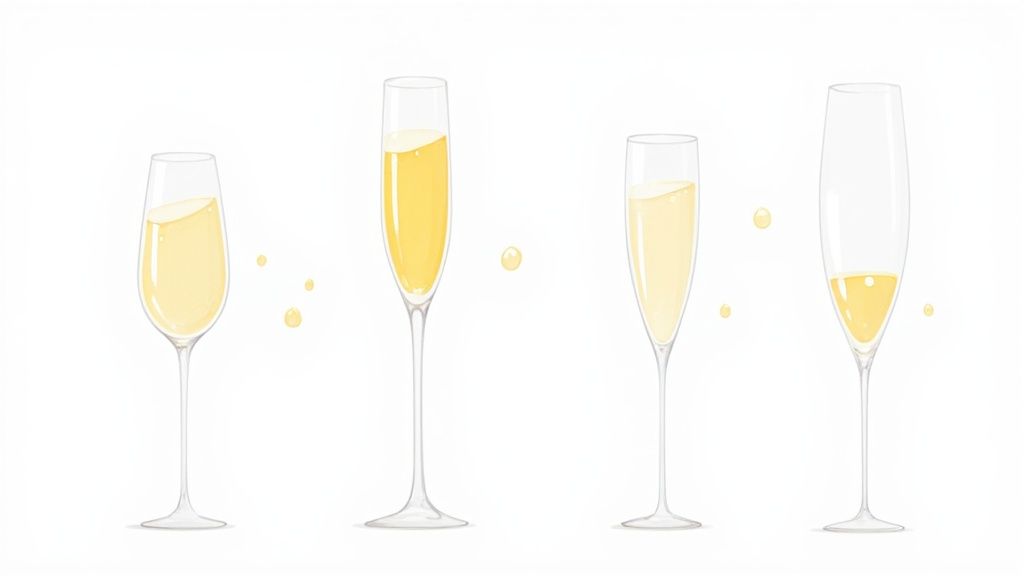
From the glassware to the server's technique, small details can make a surprisingly big difference. These variables are why one person might get five generous serves while another stretches that same bottle to seven smaller, more delicate pours. Understanding them helps you plan more accurately.
The Glassware You Choose
The shape and size of your glass play a huge role in both perception and actual volume. Each style subtly influences how much liquid feels "right" for a single serving, which directly impacts your final glass count.
- Flute: The tall, narrow shape is a classic for a reason. It visually elongates the pour, making a standard 125ml serve look full and elegant, all while preserving those precious bubbles.
- Coupe: This wide, shallow glass needs a much larger pour to look full, often leading to fewer glasses per bottle. Its broad surface also means the carbonation disappears much faster.
- Tulip: A modern favourite, its wider bowl and tapered rim are designed to concentrate the aromas. It offers a fantastic sensory experience but can sometimes encourage a slightly more generous pour.
The Human Element in Pouring
Beyond the glass itself, the person doing the pouring is easily the biggest variable. A heavy-handed pour can quickly reduce how many glasses you get from a bottle, turning six potential servings into just four or five.
Even minor spills and the excess foam from an aggressive pour really add up. Over the course of several bottles, this wastage can mean needing an extra bottle you hadn't planned for.
This focus on minimising waste has become particularly important in Australia’s hospitality sector. Restaurants and bars, which account for about 20% of wine consumption by volume, often train staff on precise pouring to manage costs effectively a practice sharpened by post-pandemic economic pressures. You can find more insights into the Australian wine market with Wine Australia.
How to Pour Champagne Like a Professional
Serving Champagne is an art form, and it directly influences not just the taste, but also how many glasses you can get from a single bottle. Mastering a few simple techniques will not only elevate the experience for your guests but also cuts down on waste, ensuring every drop is enjoyed as it should be.
The perfect pour actually begins long before you even think about popping the cork.
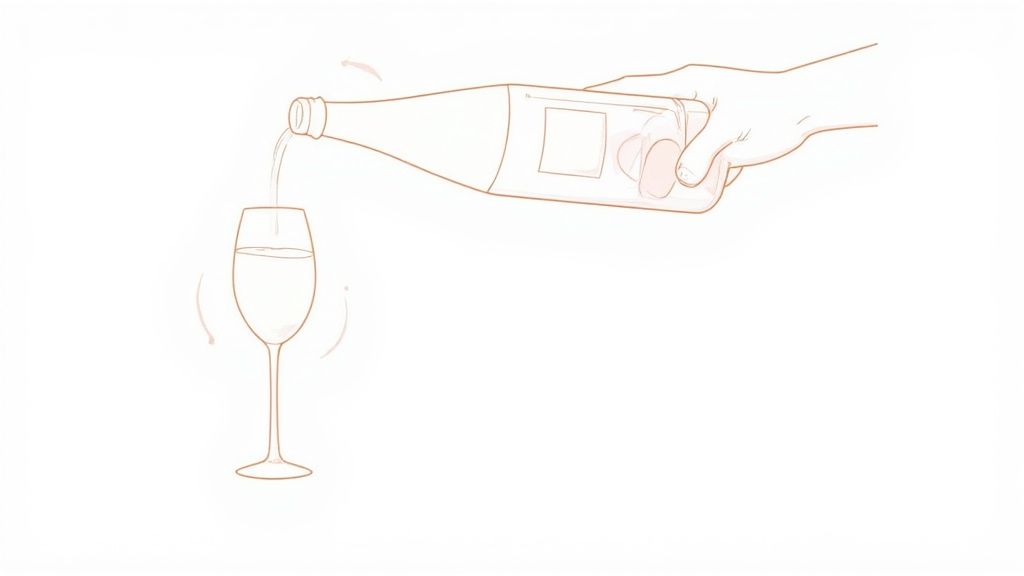
First things first, make sure your bottle is properly chilled to around 6–8°C. If the bottle is warm, it’s going to foam up like crazy when you open and pour it, robbing you of that precious fizz and liquid. A nicely chilled bottle is so much easier to handle.
When you’re ready, hold the bottle at a 45-degree angle. This lets the Champagne glide gently down the side of a tilted glass instead of splashing straight to the bottom. It’s a crucial little trick for keeping those beautiful bubbles that give Champagne its signature lively character.
Steps for the Perfect Pour
Getting it right is a simple two-step dance that stops the mousse (that’s the foam) from overflowing. This method makes sure you get the ideal fill level without spilling a drop.
-
The Initial Pour: Start by filling the glass only about one-third of the way, then pause. This little break lets that initial rush of foam settle down, putting you back in control.
-
The Top-Up: Once the mousse has calmed, continue pouring slowly until the glass is about two-thirds full. This leaves just enough space at the top for the aromas to gather, which makes the whole tasting experience that much better.
A rushed, straight-down pour just agitates the Champagne, causing it to lose its carbonation far too quickly. Not only does this leave you with a less vibrant drink, but it also creates a mountain of foam, which means fewer glasses from your bottle.
By following these simple steps, you can confidently serve Champagne with real finesse. For a more detailed look at temperature and other serving essentials, you can find more tips on how to store and serve Champagne for maximum enjoyment.
Why Australia Loves Champagne
It’s no secret that Aussies have a serious love affair with Champagne. We consistently rank as one of the top global markets for the French bubbly, popping corks for everything from huge milestones to a casual Friday night knock-off. This isn't just a feeling; the numbers tell a pretty powerful story about our national thirst for the good stuff.
Our appreciation for Champagne has turned Australia into a key destination for the region’s most famous houses. This means an incredible volume of bottles makes its way to our shores each year, which is exactly why knowing how many glasses you can get from a bottle is so handy for local hosts. The sheer scale is impressive and shows just how deeply Champagne is woven into our culture of celebration.
A Nation of Champagne Lovers
The import figures really spell it out. Back in 2020, Australia brought in a staggering 8.52 million bottles of Champagne. When you break that down, it paints a vivid picture of just how much we enjoy a glass of fizz. If every one of those was a standard 750ml bottle, that works out to around 85.2 million standard 125ml glasses more than enough for every adult in the country to enjoy a few glasses. You can get the full story on Australia's Champagne market trends to see the bigger picture.
This massive popularity is largely driven by non-vintage (NV) styles, which we love for their consistent quality and approachability. They've become the go-to choice for countless events and those everyday moments that just feel a little better with bubbles.
Non-vintage Champagne is the signature style of each house. It’s this reliability and familiar flavour that has made it the overwhelming favourite in the Australian market, perfect for any occasion that calls for the pop of a cork.
This preference for NV Champagne shapes what we buy and makes understanding serving sizes even more important. Whether you’re planning a big party or just cracking a bottle at home, knowing your pour counts means you’re always ready to go. To find the perfect bottle for your next gathering, check out our guide on the best Champagne in Australia for 2025.
Your Champagne Questions Answered
Even the most organised host has questions when it’s time to pop the cork. Getting a few of the common ones sorted ahead of time means you can pour with confidence and keep the good times flowing. From wedding toasts to saving the leftovers, here are the simple answers you’re looking for.
How Many Bottles Do I Need For A Wedding Toast?
Great news is you don’t need to pour a full glass for a toast. A smaller measure of about 75-90ml is all you need, which is plenty for everyone to raise a glass to the happy couple. This means a standard 750ml bottle will comfortably cover 8-10 guests.
For a quick calculation, just divide your total number of guests by 9. This will give you a pretty reliable estimate for how many bottles you’ll need for that one special moment. Planning the toast is just one part of the fun; pairing it with great wedding reception entertainment ideas is what really brings the celebration to life.
Is The Serving Size The Same For Prosecco Or Cava?
Yes, it sure is. The maths is exactly the same because other popular sparkling wines like Italian Prosecco, Spanish Cava, and our own Aussie sparklings are all sold in the same standard 750ml bottles.
So, you can apply the same rule of thumb across the board. You'll get about six standard 125ml glasses from a bottle, no matter which style of bubbly you've chosen.
Pro Tip: Whether it's Champagne, Prosecco, or a local sparkling, the serving principles are identical. This makes planning a party with a mix of bubbles beautifully straightforward.
What Is The Best Way To Store An Open Bottle?
If you have any bubbly left over, an airtight seal is your best friend. The trick is to use a proper Champagne stopper, the kind that clamps down over the neck of the bottle and locks the precious carbonation inside.
These little gadgets are inexpensive and work wonders, keeping the fizz fresh for one to three days in the fridge. And please, ignore the old wives' tale about putting a silver spoon in the bottle it doesn't create a seal and won't do a thing to stop your wine from going flat.
At McLaren Vale Cellars, we have a fantastic range of Australian sparkling wines perfect for any occasion. Explore our collection today and find the perfect bubbles for your next celebration.

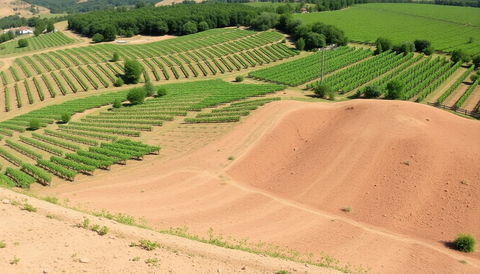
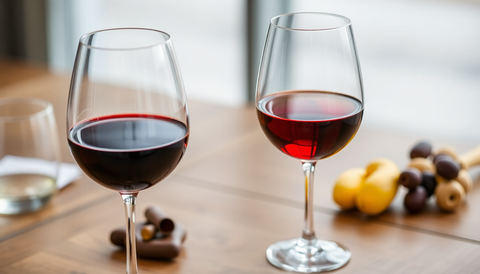

Comments (0)
There are no comments for this article. Be the first one to leave a message!